COMMENT OF THE DAY RUNNER-UP: WHAT PEOPLE IN KATY DIDN’T KNOW ABOUT FLOODING  “We live in a house close to 99 in Katy. We have lived in this area for most of the last 10 years — in two different houses. I can tell you that each time we bought there was no mention, that I recall, of being inside of a potential bowl of water from the Barker reservoir. Nor were we mandated by mortgage companies to require flood insurance. We are MILES from the dam itself and never considered it. None of our neighbors did. Imagine our shock to wake up days after the storm to suddenly learn we were in a mandatory evacuation zone. Fortunately our house was far enough west, and high enough, that we didn’t take any damage. Many of our friends and neighbors weren’t so lucky. As we eventually learned, hardly anyone had flood insurance. We didn’t. It’s not that we weren’t in a 100 year flood plain, I don’t think we’re in the 500 year either. I have since purchased flood insurance (Fool me once, etc).
But I do think there is a case to be made against some agencies. What we’re learning now about lack of prudence between developers, ACOE, and Fort Bend County seems to be at least a little suspect. Some of these neighborhoods perhaps should have never been built. Additionally, the flood zone maps seem woefully out of date and do not take into account the further upstream development.
I get it — many people are going to point the finger at the homeowner and either their lack of planning or insurance. Fair point. But this event caught a lot of people off guard and I believe exposed a lot of problems that still need to be addressed.” [HaventFloodedYet, commenting on Suing the Army Corps for Reservoir Releases; A City App for Debris Removal; 30 Years of the GRB] Illustration: Lulu
“We live in a house close to 99 in Katy. We have lived in this area for most of the last 10 years — in two different houses. I can tell you that each time we bought there was no mention, that I recall, of being inside of a potential bowl of water from the Barker reservoir. Nor were we mandated by mortgage companies to require flood insurance. We are MILES from the dam itself and never considered it. None of our neighbors did. Imagine our shock to wake up days after the storm to suddenly learn we were in a mandatory evacuation zone. Fortunately our house was far enough west, and high enough, that we didn’t take any damage. Many of our friends and neighbors weren’t so lucky. As we eventually learned, hardly anyone had flood insurance. We didn’t. It’s not that we weren’t in a 100 year flood plain, I don’t think we’re in the 500 year either. I have since purchased flood insurance (Fool me once, etc).
But I do think there is a case to be made against some agencies. What we’re learning now about lack of prudence between developers, ACOE, and Fort Bend County seems to be at least a little suspect. Some of these neighborhoods perhaps should have never been built. Additionally, the flood zone maps seem woefully out of date and do not take into account the further upstream development.
I get it — many people are going to point the finger at the homeowner and either their lack of planning or insurance. Fair point. But this event caught a lot of people off guard and I believe exposed a lot of problems that still need to be addressed.” [HaventFloodedYet, commenting on Suing the Army Corps for Reservoir Releases; A City App for Debris Removal; 30 Years of the GRB] Illustration: Lulu
Tag: Comments
COMMENT OF THE DAY: INSIDE THE WESTERN UNION BUILDING BURIED INSIDE THE BANK OF AMERICA CENTER DOWNTOWN 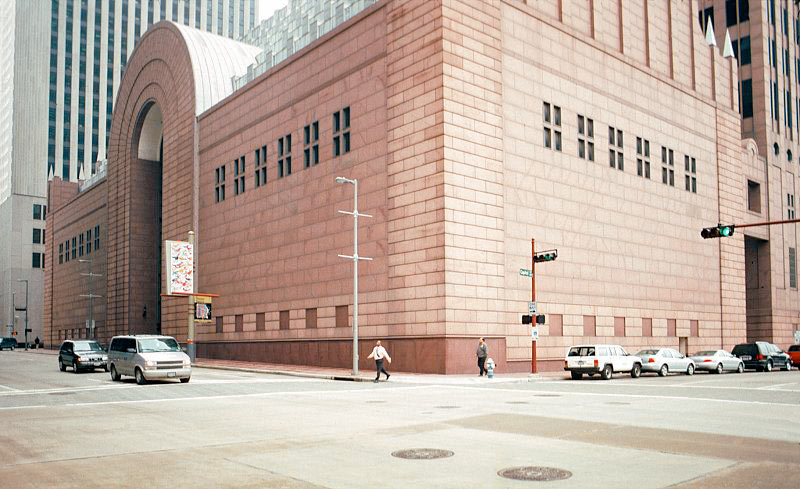 “The Western Union building is only 2 stories. It is completely intact, tar and gravel roof included. The 3rd floor Mezzanine of the BOA building was built clear span over the top of the old WU building. The windows you see on the outside are for the mezzanine. As for the ‘gap’ between the buildings, you can walk/crawl around most of it. Some areas between the buildings are big enough that you could set a desk in there, some are tight enough to induce panic. There is basically nothing left from WU in there, but there were still some curious old artifacts last time I was in there. I worked for the building for a while, and led a few of the tours of architects/designers when this project was in the concept phase.” [ProFixer, commenting on For Its Next Trick, Bank of America Center Will Completely Digest the Secret Building It Swallowed 35 Years Ago] Photo: Mary Ann Sullivan
“The Western Union building is only 2 stories. It is completely intact, tar and gravel roof included. The 3rd floor Mezzanine of the BOA building was built clear span over the top of the old WU building. The windows you see on the outside are for the mezzanine. As for the ‘gap’ between the buildings, you can walk/crawl around most of it. Some areas between the buildings are big enough that you could set a desk in there, some are tight enough to induce panic. There is basically nothing left from WU in there, but there were still some curious old artifacts last time I was in there. I worked for the building for a while, and led a few of the tours of architects/designers when this project was in the concept phase.” [ProFixer, commenting on For Its Next Trick, Bank of America Center Will Completely Digest the Secret Building It Swallowed 35 Years Ago] Photo: Mary Ann Sullivan
COMMENT OF THE DAY RUNNER-UP: WHAT IT TOOK TO BRING THE MACY’S AT THE GREENSPOINT MALL BACK TO LIFE 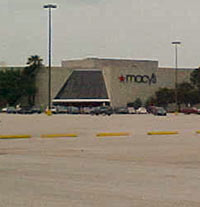 “I drive by Greenspoint Mall daily and it’s quite unusual to see the ‘beehive of activity‘ at the former Macy’s from it’s recent use as a shelter. I haven’t seen that many cars outside the building since the early ’80s! Ironically, the ‘For Lease’ sign still hangs prominently on the west wall.” [Native Houstonian, commenting on Sheltered in the Greenspoint Mall Macy’s; What the EPA Hasn’t Tested; Vacating the 100-Year Floodplain] Photo: Judahdavis
“I drive by Greenspoint Mall daily and it’s quite unusual to see the ‘beehive of activity‘ at the former Macy’s from it’s recent use as a shelter. I haven’t seen that many cars outside the building since the early ’80s! Ironically, the ‘For Lease’ sign still hangs prominently on the west wall.” [Native Houstonian, commenting on Sheltered in the Greenspoint Mall Macy’s; What the EPA Hasn’t Tested; Vacating the 100-Year Floodplain] Photo: Judahdavis
COMMENT OF THE DAY: WHAT’S FLOWING TOWARD HOUSTON’S EAST END  “The entire East End except for a handful of homes near the bayou in Idylwood drains well and doesn’t flood. Allison, Ike, Harvey . . . nada. The steady drip drip of people moving over here might become a real flood now though.” [Dana-X, commenting on High and Dry in EaDo; Theatrical Shelter at the GRB; Elevated Before Harvey, Just in Time]
“The entire East End except for a handful of homes near the bayou in Idylwood drains well and doesn’t flood. Allison, Ike, Harvey . . . nada. The steady drip drip of people moving over here might become a real flood now though.” [Dana-X, commenting on High and Dry in EaDo; Theatrical Shelter at the GRB; Elevated Before Harvey, Just in Time]
COMMENT OF THE DAY: BEHIND THE ‘EVERYBODY OUT’ ORDER AT 2100 MEMORIAL 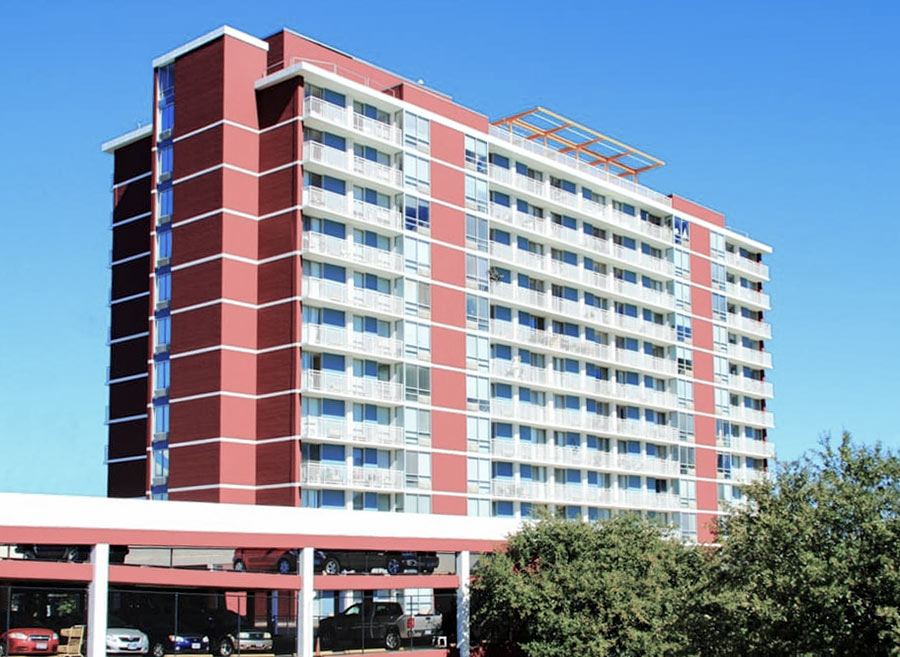 “I’ve volunteered there and can tell you the entire ‘sub-basement’ electrical/fire control room was completely submerged. I assume that entities receiving government rent subsidies must meet current NEC (nat’l elect code) standards on renovations/repairs. . . . Thus, if entire elect/fire control room is gutted/replaced then all rooms’ receptacles, fixtures, elevators, laundries . . . etc. must be replaced to meet current NEC also. I doubt you can ‘scab on’ new equipment to decades old equipment on a major renovations. Would you trust it?
You can’t make this type of systemic overhaul while residents stay in their unflooded upper floor apts. Unfortunately, for their safety they must be moved ASAP. The existing lights and limited A/C are being run off of generators. You can’t run a hi-rise indefinitely on generators.
God forbid a fire breaks out or an elevator fails due to faulty electrical system. Help is needed now finding affordable & safe housing, transport, and followup assistance. Hard enough in ‘normal’ times but that much more difficult post-Harvey.” [Steve, commenting on Residents of 2100 Memorial Senior Highrise Now Have 5 Days To Move Out of Their ‘Uninhabitable’ Apartments] Photo: 2100 Memorial
“I’ve volunteered there and can tell you the entire ‘sub-basement’ electrical/fire control room was completely submerged. I assume that entities receiving government rent subsidies must meet current NEC (nat’l elect code) standards on renovations/repairs. . . . Thus, if entire elect/fire control room is gutted/replaced then all rooms’ receptacles, fixtures, elevators, laundries . . . etc. must be replaced to meet current NEC also. I doubt you can ‘scab on’ new equipment to decades old equipment on a major renovations. Would you trust it?
You can’t make this type of systemic overhaul while residents stay in their unflooded upper floor apts. Unfortunately, for their safety they must be moved ASAP. The existing lights and limited A/C are being run off of generators. You can’t run a hi-rise indefinitely on generators.
God forbid a fire breaks out or an elevator fails due to faulty electrical system. Help is needed now finding affordable & safe housing, transport, and followup assistance. Hard enough in ‘normal’ times but that much more difficult post-Harvey.” [Steve, commenting on Residents of 2100 Memorial Senior Highrise Now Have 5 Days To Move Out of Their ‘Uninhabitable’ Apartments] Photo: 2100 Memorial
COMMENT OF THE DAY: FLOODING IMPROVEMENTS  “I have flooded twice in my home, once with 1 in. and then again in 2015 with about 6 to 8 inches. We rebuilt higher, and didn’t flood in Harvey, but I still wonder if I did the right thing. Basically I can say flooded, raised, didn’t flood — perhaps that’s a better story? Or even a better story is not near a major bayou.” [Bob Jones, commenting on When ‘Never Flooded’ Doesn’t Work] Illustration: Lulu
“I have flooded twice in my home, once with 1 in. and then again in 2015 with about 6 to 8 inches. We rebuilt higher, and didn’t flood in Harvey, but I still wonder if I did the right thing. Basically I can say flooded, raised, didn’t flood — perhaps that’s a better story? Or even a better story is not near a major bayou.” [Bob Jones, commenting on When ‘Never Flooded’ Doesn’t Work] Illustration: Lulu
COMMENT OF THE DAY: THE MORE WEST HOUSTON FLOODS, THE MORE IT STAYS THE SAME 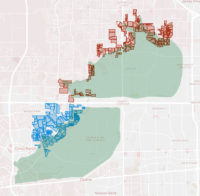 “Why does it matter? Even after the flood, I am okay with them building there on private land. Flood risk is just one of a million things that you should look at when buying a home. Heck, even knowing what we know now, I might still buy there in the right situation. If I was looking to buy a home in that general area, and the only way I can get one is to build one on the far back end of the reservoir, I would still do it today. Even after we calibrate the models to include the recent rainfall events, we will still find that this is an outlier.” [Rex, commenting on How It Came To Pass That Hundreds of Families Purchased Homes Inside Houston’s Reservoirs; previously on Swamplot] Map of subdivisions in or along the edge of the Addicks and Barker reservoirs: ProPublica
“Why does it matter? Even after the flood, I am okay with them building there on private land. Flood risk is just one of a million things that you should look at when buying a home. Heck, even knowing what we know now, I might still buy there in the right situation. If I was looking to buy a home in that general area, and the only way I can get one is to build one on the far back end of the reservoir, I would still do it today. Even after we calibrate the models to include the recent rainfall events, we will still find that this is an outlier.” [Rex, commenting on How It Came To Pass That Hundreds of Families Purchased Homes Inside Houston’s Reservoirs; previously on Swamplot] Map of subdivisions in or along the edge of the Addicks and Barker reservoirs: ProPublica
COMMENT OF THE DAY: DISASTER EVICTION DISASTERS 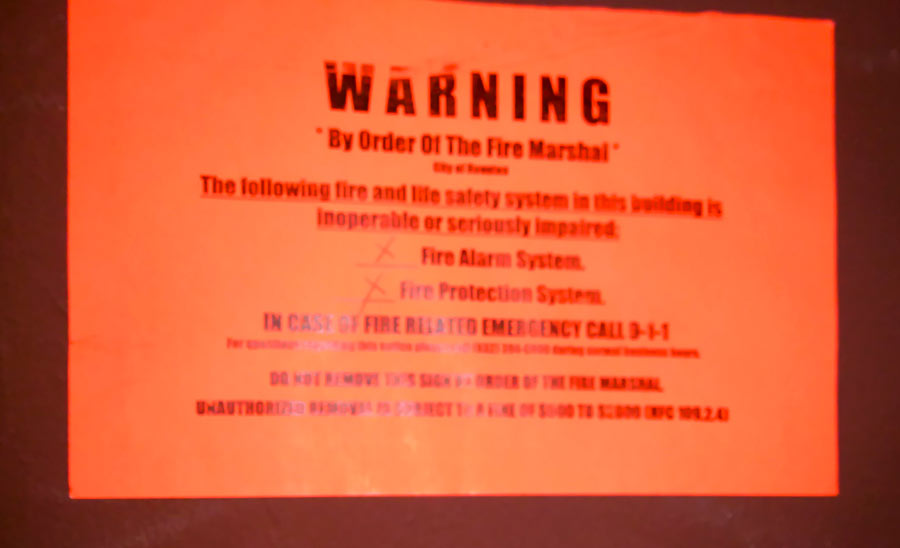 “This just brings into focus how landlord tenant law is totally inefficient when it comes to natural disasters. When a landlord cannot repair the leasehold in a timely manner, they have no choice but to terminate the leases. While it certainly makes sense that you would want to free people from having to pay rent on a residence that was not habitable, the unintended consequence is that people are uprooted from their community and scattered about the city with little chance of returning to their homes. Likewise, landlords are forced to empty out their premises and pray that they will be able to fill up their building once renovations are completed. Why not give the landlord the option to obtain temporary housing for tenants and keep the lease in place. When repairs are complete, the tenants can move back in without worrying about breaking a lease and do not have to compete with other tenants for space. Tenants could keep their address, which is very helpful for getting credit.” [Old School, commenting on Residents of 2100 Memorial Senior Highrise Now Have 5 Days To Move Out of Their ‘Uninhabitable’ Apartments] Photo of fire-safety warning sticker at 2100 Memorial: Swamplot inbox
“This just brings into focus how landlord tenant law is totally inefficient when it comes to natural disasters. When a landlord cannot repair the leasehold in a timely manner, they have no choice but to terminate the leases. While it certainly makes sense that you would want to free people from having to pay rent on a residence that was not habitable, the unintended consequence is that people are uprooted from their community and scattered about the city with little chance of returning to their homes. Likewise, landlords are forced to empty out their premises and pray that they will be able to fill up their building once renovations are completed. Why not give the landlord the option to obtain temporary housing for tenants and keep the lease in place. When repairs are complete, the tenants can move back in without worrying about breaking a lease and do not have to compete with other tenants for space. Tenants could keep their address, which is very helpful for getting credit.” [Old School, commenting on Residents of 2100 Memorial Senior Highrise Now Have 5 Days To Move Out of Their ‘Uninhabitable’ Apartments] Photo of fire-safety warning sticker at 2100 Memorial: Swamplot inbox
COMMENT OF THE DAY: SHORTER OZYMANDIAS  “How quickly nature would erase the ground-level remnants of civilization should we all suddenly perish.” [Dana-X, commenting on A Photo Tour of the Brand New Beaches Along Buffalo Bayou] Illustration: Lulu
“How quickly nature would erase the ground-level remnants of civilization should we all suddenly perish.” [Dana-X, commenting on A Photo Tour of the Brand New Beaches Along Buffalo Bayou] Illustration: Lulu
COMMENT OF THE DAY: WAKE ME UP WHEN HOUSTON’S WAKE-UP CALLS ARE OVER  “The idea that the Houston area has just been complacent all this time and needs to ‘wake up’ is ridiculous. Houston has been steadily improving its situation for decades through various means (infrastructure, regulation, mitigation, response, etc.). This progression got particular boosts by these larger events and we will see the same needed boost post-Harvey. But realize these rainfall events over the last 2+ years have been off the charts and applying these lessons learned takes years.” [Rex, commenting on Comment of the Day: The Even Bigger Reason Houston Might Want To Address Its Flooding Problems] Illustration: Lulu
“The idea that the Houston area has just been complacent all this time and needs to ‘wake up’ is ridiculous. Houston has been steadily improving its situation for decades through various means (infrastructure, regulation, mitigation, response, etc.). This progression got particular boosts by these larger events and we will see the same needed boost post-Harvey. But realize these rainfall events over the last 2+ years have been off the charts and applying these lessons learned takes years.” [Rex, commenting on Comment of the Day: The Even Bigger Reason Houston Might Want To Address Its Flooding Problems] Illustration: Lulu
COMMENT OF THE DAY: THE EVEN BIGGER REASON HOUSTON MIGHT WANT TO ADDRESS ITS FLOODING PROBLEMS  “People in Houston need to talk with people in other parts of the country to be able to understand the need for funding massive improvements in our flood control infrastructure. I had friends and family from LA to Philly telling me to get out of the city and come stay with them as soon as it was possible to travel out of the city. My sister even offered to drive her minivan over 1,200 miles to come rescue me. I still have family asking me whether they should cancel plans to visit over Thanksgiving for fear that hotels will be full and no rental cars are available.
It is easy to get all worked up about taxes when you did not get flooded and go into the usual red state “don’t tax me, tax that guy behind the tree†mode. But much more is at stake for Houston than whether parts of the city keep flooding. We run the risk of being seen as a city that is not worth the risk for existing and prospective businesses. People in Houston are getting used to these flood events and are not pressed into action by aerial footage on CNN showing Buffalo Bayou turning into a raging torrent. But everywhere else in the US, people see that and are completely freaked out by it. If we continue with applying band aids and do not make any big dramatic moves to improve our flood control infrastructure, we will not only be risking future catastrophic flooding but will also be risking losing current and future business to cities that are on higher ground away from the path of hurricanes and tropical storms.” [Old School, commenting on Comment of the Day: Abandoned Neighborhoods Make Great Detention Ponds] Illustration: Lulu
“People in Houston need to talk with people in other parts of the country to be able to understand the need for funding massive improvements in our flood control infrastructure. I had friends and family from LA to Philly telling me to get out of the city and come stay with them as soon as it was possible to travel out of the city. My sister even offered to drive her minivan over 1,200 miles to come rescue me. I still have family asking me whether they should cancel plans to visit over Thanksgiving for fear that hotels will be full and no rental cars are available.
It is easy to get all worked up about taxes when you did not get flooded and go into the usual red state “don’t tax me, tax that guy behind the tree†mode. But much more is at stake for Houston than whether parts of the city keep flooding. We run the risk of being seen as a city that is not worth the risk for existing and prospective businesses. People in Houston are getting used to these flood events and are not pressed into action by aerial footage on CNN showing Buffalo Bayou turning into a raging torrent. But everywhere else in the US, people see that and are completely freaked out by it. If we continue with applying band aids and do not make any big dramatic moves to improve our flood control infrastructure, we will not only be risking future catastrophic flooding but will also be risking losing current and future business to cities that are on higher ground away from the path of hurricanes and tropical storms.” [Old School, commenting on Comment of the Day: Abandoned Neighborhoods Make Great Detention Ponds] Illustration: Lulu
COMMENT OF THE DAY RUNNER-UP: FEAR OF A RAISED FOUNDATION  “What I’ve found to be true, anecdotally at least, is that most people who have never lived in a house with a pier and beam foundation have ZERO interest in them. They are disoriented, confused by, and even scared of them. Some of them are a little creeped out by the thought of having empty space under their floorboards. (What’s that noise? Will I have to go down there at some point?!?!?) Despite some of the most beautiful and pricey homes being built in this way, some of these people still see it as antiquated and, even, a sign of shoddy construction not designed to last.” [driftwood, commenting on How About We Don’t Sell People Homes in Areas That Keep Flooding, and Other Crazy Ideas for Houstonians To Discuss Amongst Themselves] Illustration: Lulu
“What I’ve found to be true, anecdotally at least, is that most people who have never lived in a house with a pier and beam foundation have ZERO interest in them. They are disoriented, confused by, and even scared of them. Some of them are a little creeped out by the thought of having empty space under their floorboards. (What’s that noise? Will I have to go down there at some point?!?!?) Despite some of the most beautiful and pricey homes being built in this way, some of these people still see it as antiquated and, even, a sign of shoddy construction not designed to last.” [driftwood, commenting on How About We Don’t Sell People Homes in Areas That Keep Flooding, and Other Crazy Ideas for Houstonians To Discuss Amongst Themselves] Illustration: Lulu
COMMENT OF THE DAY: RENTING AFTER HARVEY 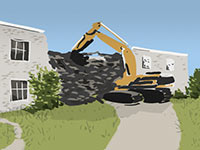 “What if a rental tenant brings to the attention of a landlord that the sheetrock and flooring need to be replaced in order for the home to be habitable. Then, the landlord agrees and ends the lease, deems the costs associated with repair to be uneconomical and tears down the house. The family living there has no place to go as every rental property in the same price strata has been leased. What then? This is not a rhetorical question. I have TWO close friends with young children in this situation. Landlord wants to tear down the homes because repairs too costly. Both families have money to pay rent, but can’t find a home to rent. Advice is welcome.” [Nice Neighbor, commenting on A Flood of Eviction Notices; Meyerland, Before and After; Here Come the Mosquitoes] Illustration: Lulu
“What if a rental tenant brings to the attention of a landlord that the sheetrock and flooring need to be replaced in order for the home to be habitable. Then, the landlord agrees and ends the lease, deems the costs associated with repair to be uneconomical and tears down the house. The family living there has no place to go as every rental property in the same price strata has been leased. What then? This is not a rhetorical question. I have TWO close friends with young children in this situation. Landlord wants to tear down the homes because repairs too costly. Both families have money to pay rent, but can’t find a home to rent. Advice is welcome.” [Nice Neighbor, commenting on A Flood of Eviction Notices; Meyerland, Before and After; Here Come the Mosquitoes] Illustration: Lulu
COMMENT OF THE DAY RUNNER-UP: ABANDONED NEIGHBORHOODS MAKE GREAT DETENTION PONDS  “I grew up off Fairbanks/West Little York area. TS Allison was the third time Creekside Estates and Woodland Trails West II had flooded which meant those homes wouldn’t be insured for future floods. Both of those neighborhoods are almost completely gone now, mainly just streets people use to cut through. Even with all the new construction/neighborhoods built near Breen Rd, nothing around has flooded since. The south side of WTW where Gulf Bank runs through flooded twice in late ’90s, along with Philippine St. in Jersey Village. Neither of those areas have had a third flood event; not Ike, Memorial Day flood, Tax Day flood or Harvey could flood them. A huge reason why has got to be because old Creekside Estates and WTW II hold so much of the water that would’ve flooded them out that costly third time years ago. Sometimes you have to cut loose some fat for the overall good and I know it sounds heartless but I’ve seen it work. These very flood prone neighborhoods just have to be made into retention areas because it works.” [mas, commenting on How About We Don’t Sell People Homes in Areas That Keep Flooding, and Other Crazy Ideas for Houstonians To Discuss Amongst Themselves] Illustration: Lulu
“I grew up off Fairbanks/West Little York area. TS Allison was the third time Creekside Estates and Woodland Trails West II had flooded which meant those homes wouldn’t be insured for future floods. Both of those neighborhoods are almost completely gone now, mainly just streets people use to cut through. Even with all the new construction/neighborhoods built near Breen Rd, nothing around has flooded since. The south side of WTW where Gulf Bank runs through flooded twice in late ’90s, along with Philippine St. in Jersey Village. Neither of those areas have had a third flood event; not Ike, Memorial Day flood, Tax Day flood or Harvey could flood them. A huge reason why has got to be because old Creekside Estates and WTW II hold so much of the water that would’ve flooded them out that costly third time years ago. Sometimes you have to cut loose some fat for the overall good and I know it sounds heartless but I’ve seen it work. These very flood prone neighborhoods just have to be made into retention areas because it works.” [mas, commenting on How About We Don’t Sell People Homes in Areas That Keep Flooding, and Other Crazy Ideas for Houstonians To Discuss Amongst Themselves] Illustration: Lulu
COMMENT OF THE DAY SECOND RUNNER-UP: THE CANAL PLAN FOR HOUSTON  “Build canals everywhere. Become the American Amsterdam. Rather than a Pierce Elevated park . . . have a canal that can take on additional water from Buffalo Bayou. Canals throughout Montrose, Midtown, Downtown and around Washington. Canals on the East End and through EaDo. Canals near the Med Center to relieve Brays Bayou, and on and on and on again. Give water new dedicated places to go that we can call amenities, and make Houston a more interesting and attractive place to recruit new companies and tourists, because our canals are unique and cool places to hang out. The Dutch know water, so why not copy them.
Then release a ton of GMO mosquitos to kill off the rest of them.” [Canalguy, commenting on How About We Don’t Sell People Homes in Areas That Keep Flooding, and Other Crazy Ideas for Houstonians To Discuss Amongst Themselves] Illustration: Lulu
“Build canals everywhere. Become the American Amsterdam. Rather than a Pierce Elevated park . . . have a canal that can take on additional water from Buffalo Bayou. Canals throughout Montrose, Midtown, Downtown and around Washington. Canals on the East End and through EaDo. Canals near the Med Center to relieve Brays Bayou, and on and on and on again. Give water new dedicated places to go that we can call amenities, and make Houston a more interesting and attractive place to recruit new companies and tourists, because our canals are unique and cool places to hang out. The Dutch know water, so why not copy them.
Then release a ton of GMO mosquitos to kill off the rest of them.” [Canalguy, commenting on How About We Don’t Sell People Homes in Areas That Keep Flooding, and Other Crazy Ideas for Houstonians To Discuss Amongst Themselves] Illustration: Lulu

